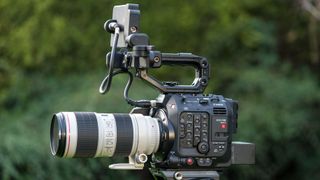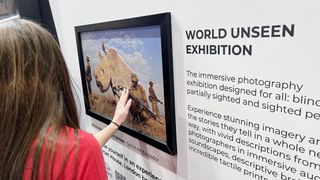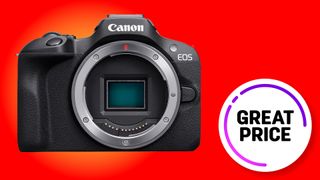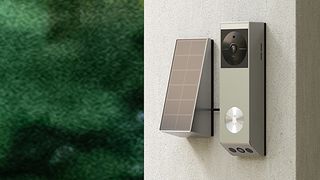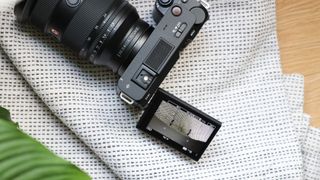
1. Best full frame
2. Best all-round
3. Best for stabilization
4. Best value
5. Best cinematic
6. Best action cam
7. Best last-gen
8. Best for photos
9. Best for size
10. Best gimbal cam
How to choose
How we test
The best cameras for vlogging are one-stop shops for serious video creation. An ideal vlogging camera is actually quite a complex proposition, as it's got to have a powerful suite of video options, while also being portable and straightforward enough for a single person to operate it.
This does give you quite a bit of flexibility though, and a good vlogging camera can mean a lot of different things, from sophisticated mirrorless systems to palm-sized waterproof action cameras. So, which to pick?
Our final shortlist is comprehensive and broad, as we've made sure to include options to suit a range of budgets. A vlogging camera is generally different from a filmmaking camera but it could still be a mirrorless camera or an action camera. If you're looking for higher-end options, you may want to look at our guide to the best cameras for video or if you don't need something quite as advanced you can check out our guide on the best phone for video recording and vlogging.
Once you've decided on what camera, phone or action camera to use you will need to think about the video editing software so you can edit your clips and if you're getting really serious about it you may want to invest in one of the best laptops for video editing which usually have more RAM, high res screens and bigger hard drives. There is also plenty of free video editing software out there if you just want to test the waters before diving in deep and shelling out on a subscription.
Ultimately, it comes down to what you want to shoot. Read on for our picks of the best cameras for vlogging, and make sure to pick up some of the essential accessories, like the best microphones and best smartphone gimbals.

Gareth is the Reviews Editor at Digital Camera World, and the person in charge of approving all the latest camera-related tech. With several years of experience as a photographer and videographer, shooting for some household names, he has learned a thing or two about cameras and the photography industry. Outside of photography, expect to find him cycling around London, or deep in a Netflix binge.
The best cameras for vlogging in 2024
Why you can trust Digital Camera World
Best full frame vlogging camera
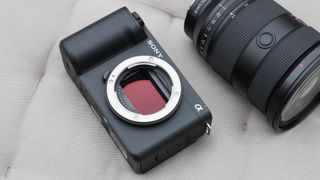
The Sony ZV-E1 is a compact camera that packs a punch with its large image-stabilized full-frame sensor. It is designed primarily for vlogging and offers excellent 4K video output. However, achieving steady handheld footage requires a significant crop. What sets this camera apart is its remarkable subject recognition and tracking features, which are currently among the best available. The still images it captures are also of high quality, although they top out at 12MP and thus have limited versatility.
While there are numerous video cameras on the market, including those from Sony’s own range, that offer similar capabilities, the ZV-E1 stands out for its power in such a compact frame. It’s a great choice for vloggers and content creators who want to capture high-quality video and still images in a portable package.
Read more: Sony ZV-E1 review
Best all-round vlogging camera
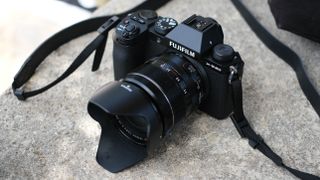
The Fujifilm X-S20 is a camera that defies expectations. It is a great choice for photo enthusiasts and hybrid creators alike, offering a seamless shooting experience for users of all levels. The camera’s intuitive and straightforward controls, combined with its compact and portable form factor, make it convenient to carry around and capture stunning moments.
But the X-S20 is more than just a pretty face. It is a powerhouse for content creation, with deceptively powerful components that enable the recording of high-quality 6K videos with professional-level output, including RAW codes and ‘open-gate’ recording. Fujifilm’s advanced subject recognition tracking has also improved significantly, making it easier than ever to capture the perfect shot.
While the increased price tag of the Fujifilm X-S20 may deter some potential buyers, it is important to consider the substantial value it offers. When weighing the features, controls, and portability of this camera against Fujifilm’s other more expensive options and the outside competition, the X-S20 is the hybrid camera to beat, pound for pound.
Read more: Fujifilm X-S20 review
Best vlogging camera for stabilization
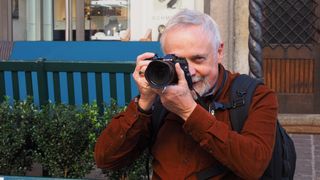
The third version of the camera that put Olympus on the mirrorless map is a truly fantastic option for vlogging. It doesn't have the 4K 60p capability of Panasonic Micro Four Thirds rivals like the Lumix GH5 II, but 4K 30p is enough for most vloggers, and the Olympus wins for autofocus, using on-sensor phase-detect AF rather than the DFD contrast AF system still used by Panasonic.
For regular filmmaking, this is less of an issue (as "proper" videography should be done with manual focus), but vlogging leaves you at your camera's mercy to keep you in focus – and Panasonic's DFD contrast AF is prone to pulsing, hunting, and reprioritizing.
The E-M5 Mark III delivers crisp, clean 4K video with rock-solid image stabilization and phase detect AF that won't let you down – and its stills photography performance is top-notch as well.
Read more: Olympus OM-D E-M5 Mark III review
Best value vlogging camera
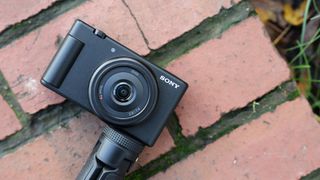
If you’re an amateur vlogger who wants a dedicated camera to record on, a run-and-gun camera that you can set up quickly and get shooting, and something you can toss in a bag or pass around among friends, then this is the camera for you. It’s a no-frills vlogging camera that will give you just what you need: a 4K video that is ready for social media, all contained in a tiny compact package, and at a hard-to-beat price.
Although it is difficult to look at the Sony ZV-1F in isolation without immediately comparing it to the latest camera phone. After using it for a week, it’s hard not to think that I already own a device that does a lot of what this camera does. However, there is still a lot to be said for having a dedicated camera, especially with an articulating screen, an edge on the quality of 4K footage, and its ease of use.
Read more: Sony ZV-1F review
Best camera for cinematic vlogs
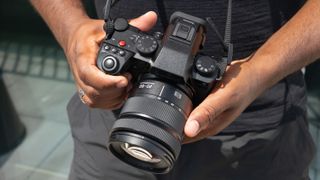
Most S-series and GH LUMIX cameras from the past five years might have overlooked them due to DFD autofocus, despite the brand’s well-known color science and user-friendly features. Those days are now behind us. The LUMIX S5 II stands out on an even playing field. It boasts a high-quality 24.2-megapixel sensor, coupled with an image processor co-developed with Leica. It can snap vibrant stills at up to 30fps in E-Shutter mode and provides unparalleled image stabilization. Its phase hybrid autofocusing system is on par with, or even surpasses, more expensive cameras. Plus, it comes with a full-sized HDMI port.
With unlimited 4K/60p 4:2:2 10-bit internal recording, S&Q 4K/60p and FHD/180p, and up to 6K full sensor readout video recording, Panasonic has crafted a highly adaptable camera for content creation. Beyond the specs, the S5 II is intuitive and feels like a natural extension of your hands once you get used to it. Every function is conveniently located on the body and within its menus. The cherry on top? You can now use EF-mount lenses with phase detection AF for both photos and videos on a LUMIX - thanks to the Sigma MC-21 adapter.
Read more: Panasonic Lumix S5 II review
Best action cam for vlogging
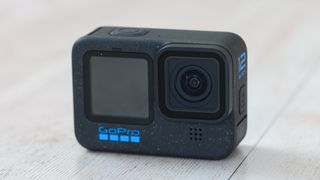
The Hero 12 Black improves on the Hero 11 Black’s strengths and adds some new features. It has an Easy Mode that is very user-friendly, as well as some advanced options that make it more appealing to professionals.
Some of the new features include Bluetooth audio, log capture, HDR video, and a 1/4-inch tripod thread. These features may not be enough to convince Hero 11 Black users to upgrade unless they need external audio or log shooting. But for those who have an older action camera or are buying their first one, the Hero 12 Black is a great choice. The Hero 12 Black still struggles with lowlight video, but it delivers excellent detail in bright conditions.
Read more: GoPro Hero 12 Black review
Best older vlogging camera
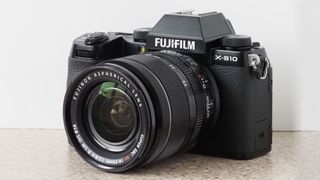
The Fujifilm X-S10 is such a great camera in our eyes that it was even once first place in our best Fujifilm cameras guide. It doesn't have the external exposure dials you'd find on the Fujifilm X-T4 which might disappoint hardcore Fujifilm fans, however, it's still an impressive bit of kit.
It features a flip-out screen (which is what makes it so good for vlogging), can shoot 4K video, and has 6 stops of in-body stabilization. Should you also want to take photos thanks to its 26.1-megapixel APS-C sensor it can produce beautiful, high-quality images.
For the feature, size, and handling, this is probably the best APS-C camera you can buy at this price point, and not only that but it takes beautiful jpegs straight out of the camera so if you're feeling lazy there's no need for editing.
Read more: Fujifilm X-S10 review
Best vlogging camera for photos
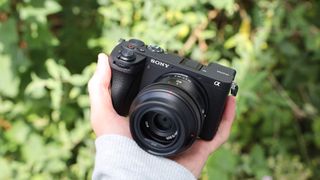
The a6700 is the latest APS-C camera from Sony, building on the success of the previous a6600 model. It has a similar compact and sleek design, but with some improvements and new features. The a6700 is ideal for hybrid shooters who want both high-quality stills and 4K video in a small and portable camera. It also has a viewfinder, which sets it apart from some of its competitors.
The a6700 starting price is more expensive than the a6600, but it offers more value for money. It has the most advanced AI autofocus system from Sony, which is also found in its ZV and FX series. It also has enhanced 4K video capabilities, making it a great choice for content creators. The a6700 is a versatile and powerful camera that can handle any situation, whether it’s travel, vlogging, or professional work.
Read more: Sony A6700 review
Best small vlogging camera
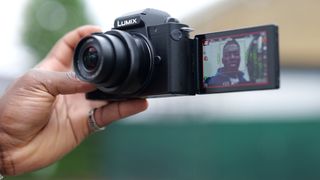
The Lumix G100 is a compact, easy-to-use camera that has an approachable button and menu layout. Its simplicity will be a big pull for vloggers and creatives who don't want or need anything too complicated.
That being said, it still delivers high-quality video and has desirable features such as a viewfinder should you also want to take stills. Plus, it feels like a "proper camera" with its ergonomic grip. While it can shoot 4K, there is a crop factor, which means you're not making the most of the sensor.
The vari-angle screen makes it great for recording yourself or even recording footage overhead or from the hip. However, it's worth noting the G100 doesn't have any in-body stabilization so you might have to invest in one of the best gimbals if you plan on doing a lot of handheld shooting. Overall, it's a compact, cute, and quite cheap camera that does the job but is lacking a couple of features.
Read more: Panasonic Lumix G100 review
Best gimbal vlogging camera
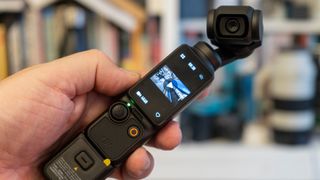
The Pocket 3 is a technical marvel that can handle any shooting situation. Whether you want to make 4K videos for YouTube or 3K clips for Instagram and TikTok, this device delivers. The larger screen and sensor are a big upgrade from the previous model. You will be amazed by how smooth and professional your videos look with the gimbal stabilization and smart tracking features.
But is it really pocket-friendly? Well, yes, but you have to be careful. You don’t want to put it in the same pocket as your phone, wallet, or keys. Use the case for extra protection. And make sure your pockets are deep enough to fit it. This is not a cheap gadget, and you might want to consider other options if you are on a budget. The older version is still decent in good light (and it has the Mic feature too). Or you could look for action cameras or phones with digital stabilization, and buy separate gimbals for them.
What makes this device stand out is that it can be both simple and complex at the same time – like a system camera. If you want to capture dynamic and moving videos, this is the device for you.
Read more: DJI Osmo Pocket 3 review
How to choose the best vlogging camera
Here are five key things to look out for when choosing your perfect vlogging camera.
1. External microphone port. When it comes to producing professional-looking videos you'll need good-quality audio. In-camera mics are ok but you'll want to use an external mic if you plan on recording audio so make sure to invest in a camera with a mic input.
2. LCD screen that can flip round to the front. A fully articulated screen is essential if you want to record yourself talking to the camera. It takes away any guesswork involved and ensures the framing of the shot is just right. Most of the time you can get away with just having a tilting screen but vlogging is the one area of photography and videography where a front-facing screen is a must.
3. AF system with effective tracking. If you plan on recording yourself while moving away, you'll need a camera that has responsive AF tracking. Since you won't actually be able to change the focus point while filming, you'll want to use eye or face AF so that the focus is always on you. This is when cameras with phase-detect AF are particularly good as they are much more consistent with moving images, unlike contrast-detect which has a tendency to hunt and drift.
4. 4K video. You can probably get away with a camera that doesn't have 4K capabilities however, technology is advancing so quickly you may as well future-proof your purchase. Even if you shoot in 4K, you can upload in 1080p to save on time but at least you have that option. You can crop into 4K, reframe your video, and still output at 1080p so it's more flexible to get a camera that is 4K ready. For more information on post-production, check out our guides on the best video editing software.
5. Great stills quality. Chances are if you're a vlogger you'll have an Instagram account and want to be able to capture stills as well as videos. Nobody wants to carry around two cameras if you can get one that will do both jobs equally well. Of course, some of the best camera phones will be great for creating content, but they'll never be as good quality as an actual camera. Our guide on the best cameras for Instagram will be a good place to look if that is your chosen platform.
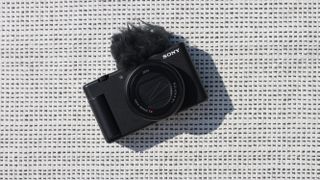
Should I buy a camera with a front facing flip screen?
If you shoot a lot of videos that feature yourself talking to camera, choosing a camera with a screen that faces will be massively helpful as it'll allow you to compose your shot and ensure your entire face is visible. It also allows you to move around and keep an eye on where you are - this is where face tracking also comes in helpful as it'll make sure your face and eyes are always in focus.
Do I need a vlogging camera or could I just use my phone?
This is entirely up to you, some of the best phones for video recording can shoot in 4K, come with in-body stabilization, and some you can even shoot cinematic anamorphic footage. However, the sensors are usually a lot smaller which means they won't operate as well in low-light situations which could be a limiting factor. It all comes down to what you want to shoot and where you want to post it.
What accessories will I need?
To start off with you may not need any at all but as you get more advanced it might be a good idea to invest in one of the best video lights, a video tripod or mini tripod, a portable hard drive so you can store all your footage, a gimbal so you can record perfectly smooth clips and a microphone so you can record really clear audio.
How we test vlogging cameras
We test cameras both in real-world shooting scenarios and in carefully controlled lab conditions. For vlogging cameras, we test things such as how well the image stabilization works when we are shooting on the move, how fast and accurate the autofocus is, whether it can track human and animal eyes and faces and how easy it is to color grade the video afterward when shooting in V-Log for example. Shooting in real-life environments we make short films and clips that put the camera's features through their paces and show what can be achieved.

